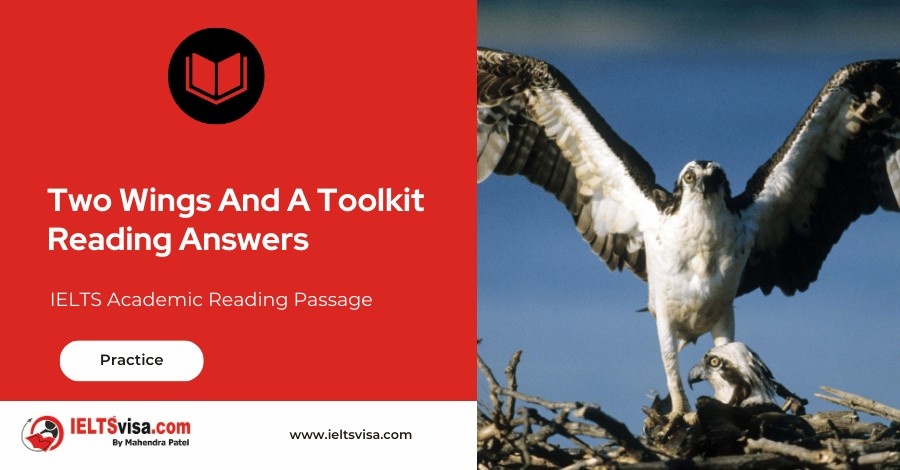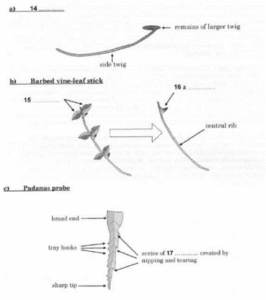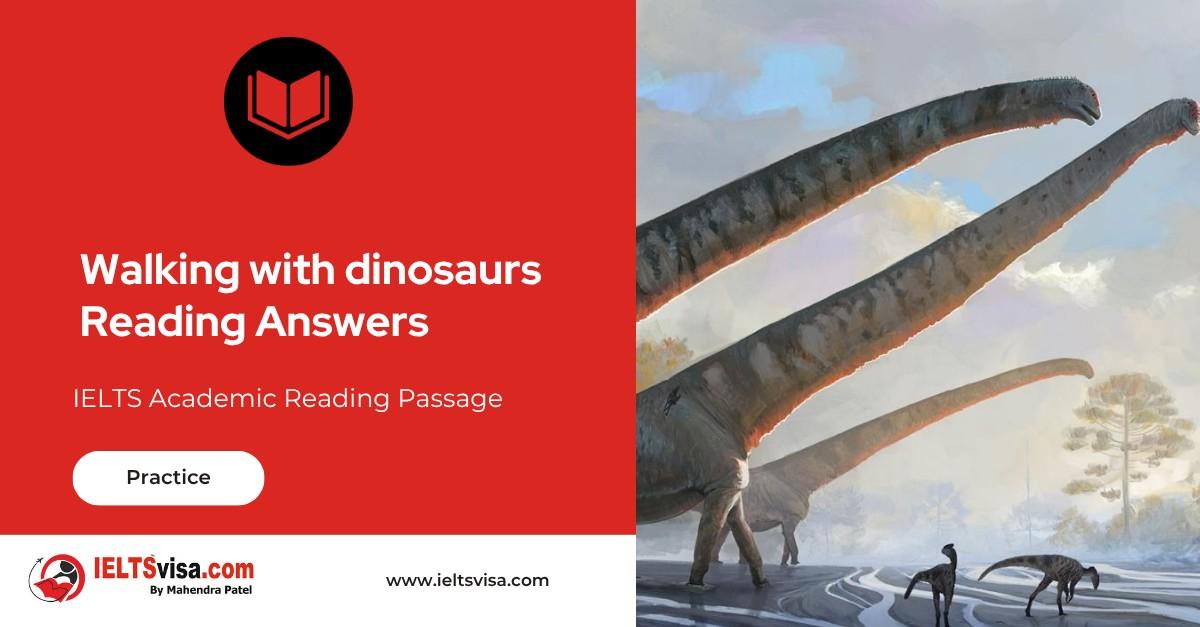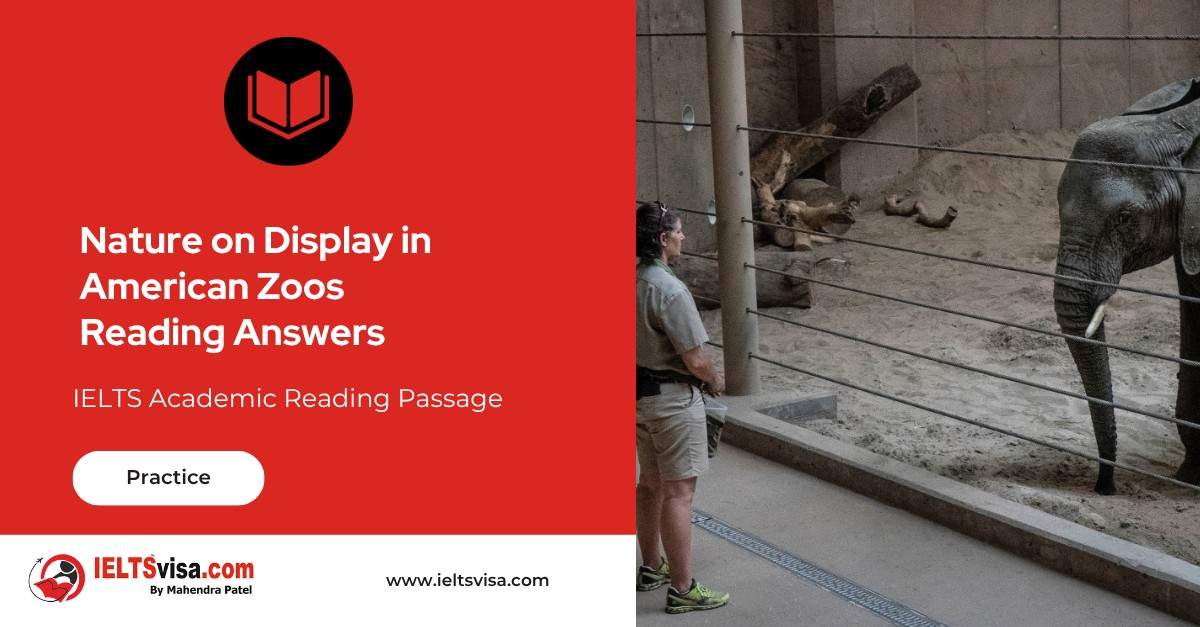Two Wings And A Toolkit Reading Answers
IELTS Academic Reading Passage
- Betty and her mate Abel are captive crows in the care of Alex Kacelnik, an expert in animal behaviour at Oxford University. They belong to a forest-dwelling species of bird (Corvus moneduloides) confined to two islands in the South Pacific. New Caledonian crows are tenacious predators, and the only birds that habitually use a wide selection of self-made tools to find food.
- One of the wild crows’ cleverest tools is the crochet hook, made by detaching a side twig from a larger one, leaving enough of the larger twig to shape into a hook. Equally cunning is a tool crafted from the barbed vine-leaf, which consists of a central rib with paired leaflets each with a rose-like thorn at its base. They strip out a piece of this rib, removing the leaflets and all but one thorn at the top, which remains as a ready-made hook to prise out insects from awkward cracks.
- The crows also make an ingenious tool called a padanus probe from padanus tree leaves. The tool has a broad base, sharp tip, a row of tiny hooks along one edge, and a tapered shape created by the crow nipping and tearing to form a progression of three or four steps along the other edge of the leaf. What makes this tool special is that they manufacture it to a standard design, as if following a set of instructions. Although it is rare to catch a crow in the act, of clipping out a padanus probe, we do have ample proof of their workmanship: the discarded leaves from which the tools are cut. The remarkable thing that these ‘counterpart’ leaves tell us is that crows consistently produce the same design every time, with no in-between or trial versions. It’s left the researchers wondering whether, like people, they envisage the tool before they start and perform the actions they know are needed to make it. Research has revealed that genetics plays a part in the less sophisticated tool making skills of finches in the Galapagos islands. No one knows if that’s also the case for New Caledonian crows, but it’s highly unlikely that their toolmaking skills are hardwired into the brain. ‘The picture so far points to a combination of cultural transmission – from parent birds to their young – and individual resourcefulness,’ says Kacelnik.
- In a test at Oxford, Kacelnik’s team offered Betty and Abel an original challenge – food in a bucket at the bottom of a well’. The only way to get the food was to hook the bucket out by its handle. Given a choice of tools – a straight length of wire and one with a hooked end – the birds immediately picked the hook, showing that they did indeed understand the functional properties of the tool.
- But do they also have the foresight and creativity to plan the construction of their tools? It appears they do. In one bucket-in- the-well test, Abel carried off the hook, leaving Betty with nothing but the straight wire. What happened next was absolutely amazing,’ says Kacelnik. She wedged the tip of the wire into a crack in a plastic dish and pulled the other end to fashion her own hook. Wild crows don’t have access to pliable, bendable material that retains its shape, and Betty’s only similar experience was a brief encounter with some pipe cleaners a year earlier. In nine out of ten further tests, she again made hooks and retrieved the bucket.
- The question of what’s going on in a crow’s mind will take time and a lot more experiments to answer, but there could be a lesson in it for understanding our own evolution. Maybe our ancestors, who suddenly began to create symmetrical tools with carefully worked edges some 1.5 million years ago, didn’t actually have the sophisticated mental abilities with which we credit them. Closer scrutiny of the brains of New Caledonian crows might provide a few pointers to the special attributes they would have needed. ‘If we’re lucky we may find specific developments in the brain that set these animals apart,’ says Kacelnik.
- One of these might be a very strong degree of laterality – the specialisation of one side of the brain to perform specific tasks. In people, the left side of the brain controls the processing of complex sequential tasks, and also language and speech. One of the consequences of this is thought to be right-handedness. Interestingly, biologists have noticed that most padanus probes are cut from the left side of the leaf, meaning that the birds clip them with the right side of their beaks – the crow equivalent of right- handedness. The team thinks this reflects the fact that the left side of the crow’s brain is specialised to handle the sequential processing required to make complex tools.
- Under what conditions might this extraordinary talent have emerged in these two species? They are both social creatures, and wide-ranging in their feeding habits. These factors were probably important but, ironically, it may have been their shortcomings that triggered the evolution of toolmaking. Maybe the ancestors of crows and humans found themselves in a position where they couldn’t make the physical adaptations required for survival – so they had to change their behaviour instead. The stage was then set for the evolution of those rare cognitive skills that produce sophisticated tools. New Caledonian crows may tell us what those crucial skills are.
Questions 14-17:
Label the diagram
Choose NO MORE THAN TWO WORDS from the passage for each answer.

Question 14: ……………………..
Question 15: ……………………..
Question 16: ……………………..
Question 17: ……………….
Questions 18-23:
Do the following statements agree with the information given in the passage? Write
- TRUE if the statement agrees with the information
- FALSE if the statement contradicts the information
- NOT GIVEN if there is no information on this
18) There appears to be a fixed pattern for the padanus probe’s construction
19) There is plenty of evidence to indicate how the crows manufacture the padanus probe
20 Crows seem to practise a number of times before making a usable padanus probe.
21 The researchers suspect the crows have a mental image of the padanus probe before they create it.
22 Research into how the padanus probe is made has helped to explain the toolmaking skills of many other bird species.
23 The researchers believe the ability to make the padanus probe is passed down to the crows in their genes.
Questions 24-26
Choose THREE letters, A-G.
According to the information in the passage, which THREE of the following features are probably common to both New Caledonian crows and human beings?
A keeping the same mate for life
B having few natural predators
C having a bias to the right when working
D being able to process sequential tasks
E living in extended family groups
F eating a variety of foodstuffs
G being able to adapt to diverse habitats

Solution For: Two Wings And A Toolkit
Reading Answers
| 26 Crochet hook | 27 Leaflets/leaves |
| 28 Thorn | 29 (Tapered) steps |
| 30 TRUE | 31 TRUE |
| 32 FALSE | 33 TRUE |
| 34 NOT GIVEN | 35 FALSE |
| 36 C | 37 D |
| 38 G | – |
Review and Practice
- Regularly practice with IELTS reading samples and time yourself to get used to the pressure of the exam.
- Review your mistakes to understand where you went wrong and how to avoid similar errors in the future.
Our Books
Master IELTS Speaking Part 1
IELTS Writing Task 1 Book
IELTS Writing Task 2 Book
Two Wings And A Toolkit Reading Answers Explanation
Comin Soon
Practice IELTS Other Modules
IELTS Listening
The IELTS Listening test assesses how well you can understand spoken English in various contexts. It lasts about 30 minutes and is divided into four sections with a total of 40 questions. The listening tasks become increasingly difficult as the test progresses.
IELTS Academic Reading
The IELTS Academic Reading section assesses your ability to understand and interpret a variety of texts in academic settings. It is designed to evaluate a range of reading skills, including skimming for gist, reading for main ideas, reading for detail, understanding inferences, and recognizing a writer's opinions and arguments.
IELTS Speaking
The IELTS Speaking test assesses your ability to communicate in English on everyday topics. It lasts 11-14 minutes and consists of three parts: introduction, cue card, and a discussion based on the cue card topic.
IELTS General Reading
IELTS General Reading tests your ability to understand and interpret various types of texts. Here are some key areas and types of content you can expect to encounter in the reading section, along with tips for effective preparation.
IELTS Academic Writing Task 1
In IELTS Academic Writing Task 1, you are presented with a visual representation of information, such as graphs, charts, tables, or diagrams, and you are required to summarize, compare, or explain the data in your own words.
IELTS General Writing Task 1
In IELTS General Writing Task 1, you are required to write a letter based on a given situation. The letter can be formal, semi-formal, or informal, depending on the prompt. Here’s a breakdown of the key components to include in your letter
IELTS Academic Writing Task 2
In IELTS Academic Writing Task 2, you are required to write an essay in response to a question or topic. Here’s a guide to help you understand the essential elements of this task
IELTS Exam Tips
To succeed in the IELTS exam, practice regularly, familiarize yourself with the test format, improve your vocabulary, develop time management skills, and take mock tests to build confidence.
Grammer for IELTS
Grammar is the foundation of effective communication in English. Understanding tense usage, subject-verb agreement, and sentence structure enhances clarity and coherence in writing and speaking.
Vocabulary for IELTS
Vocabulary plays a crucial role in the IELTS (International English Language Testing System) exam, especially in the Speaking and Writing sections. Here’s an overview of why vocabulary is important and how it impacts your performance
RECENT IELTS SAMPLES QUESTIONS AND ANSWERS
Walking with dinosaurs
Peter L. Falkingham and his colleagues at Manchester University are developing techniques that...
Money as the Unit of Amount Reading Answers
The most difficult aspect of money to understand is its function as a unit of account. In...
WEATHERING IN THE DESERT
In the deserts, as elsewhere, rocks at the earth's surface are changed by weathering, which...
Nature on Display in American Zoos
The first zoo in the United States opened in Philadelphia in 1874, followed by the Cincinnati...
Can We Prevent the Poles From Melting
Such is our dependence on fossil fuels, and such is the volume of carbon dioxide we have...
Air conditioning the earth reading answers
The circulation of air in the atmosphere is activated by convection, the transference of heat...













